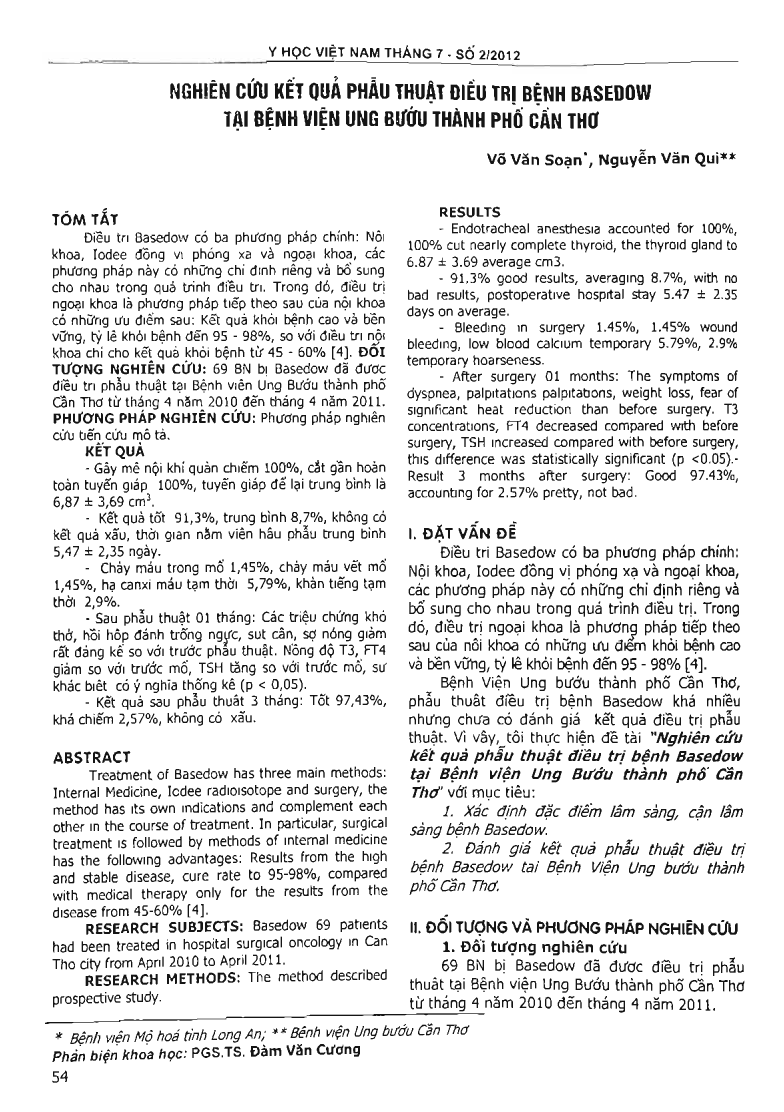
Treatment of Basedow has three main methods: Internal Medicine, Iodee radioisotope and surgery, the method has its own indications and complement each other in the course of treatment. In particular, surgical treatment is followed by methods of internal medicine has the following advantages: Results from the high and stable disease, cure rate to 95-98 percent, compared with medical therapy only for the results from the disease from 45-60 percent. Research subjects: Basedow 69 patients had been treated in hospital surgical oncology in Can Tho city from April 2010 to April 2011. Research methods: The method described prospective study. Results: - Endotracheal anesthesia accounted for 100 percent, 100 percent cut nearly complete thyroid, the thyroid gland to 6.87 + or - 3.69 average cm3. - 91.3 percent good results, averaging 8.7 percent, with no bad results, postoperative hospital stay 5.47 + or - 2.35 days on average. - Bleeding in surgery 1.45 percent, 1.45 percent wound bleeding, low blood calcium temporary 5.79 percent, 2.9 percent temporary hoarseness. - After surgery 01 months: The symptoms of dyspnea, palpitations palpitations, weight loss, fear of significant heat reduction than before surgery. T3 concentrations, FT4 decreased compared with before surgery, TSH increased compared with before surgery, this difference was statistically significant (p 0.05). Result 3 months after surgery: Good 97.43 percent, accounting for 2.57 percent pretty, not bad.
- Đăng nhập để gửi ý kiến
